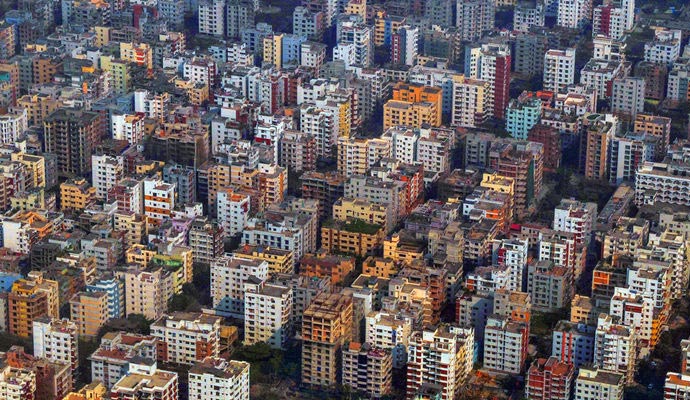Our project is very closely situated and easily connected to the following list of key locations in the Purbachal area. Bellow some important premises for our project
View all AwardsThe Future Expansion Plan of Dhaka
Dhaka is one of the megacities in the world. Nowadays the world is becoming urban rapidly. Now, over 55% out of 7 billion people of the world live in the cities of different countries, especially the cities in Asia. According to the UN data, by 2030 60% of the population of the world will live in the cities.
Most of the time, various governments have taken up several types of plans and projects for the development, expansion and improvement of Dhaka City, unfortunately a few of those plans have succeeded. Once ‘Dhaka’ is called ‘Dacca’ grown by the side of the river Buriganga came into being the days of ancient times and myth.
Before the arrival of Mughals Dhaka was ruled by Turko-Afghans, Armenian and Portuguese. Dhaka is sometimes called the town of “Bauanna Bazar Teppanna Gaulir Shohor”. During the time of Mughal era, the city sporadically flourished up to Narayanganj in the south and Tongi in the north, when it was called the business hub in the world.
The Detailed Area Plan of 2016-2035 (DAP) takes on the various challenges of this complex megacity with a tremendous and detailed document that has focused on its pros and cons. Those who study the destiny of the cities feel that, despite being so extensive, this sample document is to articulate or expand some important issues that drive the city. The principles of these details are in those crucial issues, which are as follows:
Urban Development Process Of Dhaka
The biggest question of urban development is - how to do it? The world's major cities have worked for collective development through a combination of various infrastructure investments and policies. Three methods are mentioned here which can be useful in the case of Dhaka as well.
Much remains to be done to make Dhaka more livable as measured by the city's various services and quality of life indicators. There are numerous obstacles in achieving the goal of making Dhaka livable. For example:

Not only these, there are various mismanagement in the city. New investment and planning is necessary to overcome these problems. There are more than 50 development and regulatory agencies in Dhaka. Each organization has its own ideas about the future of the city.
Transit-dependent development
Transit-oriented development is planned in conjunction with transportation routes and land use policies. Density and use of population and infrastructure are determined in specific zonal areas. Its objective is to improve housing as well as commercial and administrative concentration and ease of movement.
In Arlington County, Washington DC, United States, land development plans are made for areas surrounding various subway stations. As a result, land management and transport systems play complementary roles.
The investment in Dhaka's current Mass Rapid Transit (MRT) and Bus Rapid Transit (BRT) projects is more than 20 billion dollars. And therefore there is a huge scope for integrated development based on transit in Dhaka.

Environmental management solutions
Eco-friendly solutions to water-drainage management in Dhaka can cost-effectively reduce the risk of flooding. Due to its flat topography, distance from rivers and numerous lakes and canals, Dhaka is prone to flooding and waterlogging due to rainwater accumulation. Improving drainage management and investing in climate adaptation can save billions by preventing future flood damage.
The World Bank helped run a successful project in Colombo, Sri Lanka to identify and protect urban wetlands as well as improve drainage systems. Flood risk has been reduced by conserving wetlands in the city. At the same time green parks have also increased in size in the city to entertain the residents of Colombo.
Land Consolidation
Land consolidation plays an important role in urban renewal in various parts of the world, including Thimpu in Bhutan.Along with plans to build industrial and commercial centers in northern and eastern parts of Dhaka, land and infrastructure development plans are urgently needed in the case of urban expansion.
Sectors such as sanitation, transport, housing, health and education can be included in the land consolidation plan according to investment priorities. Land can be earmarked separately for affordable housing, stations, green parks and other management.







